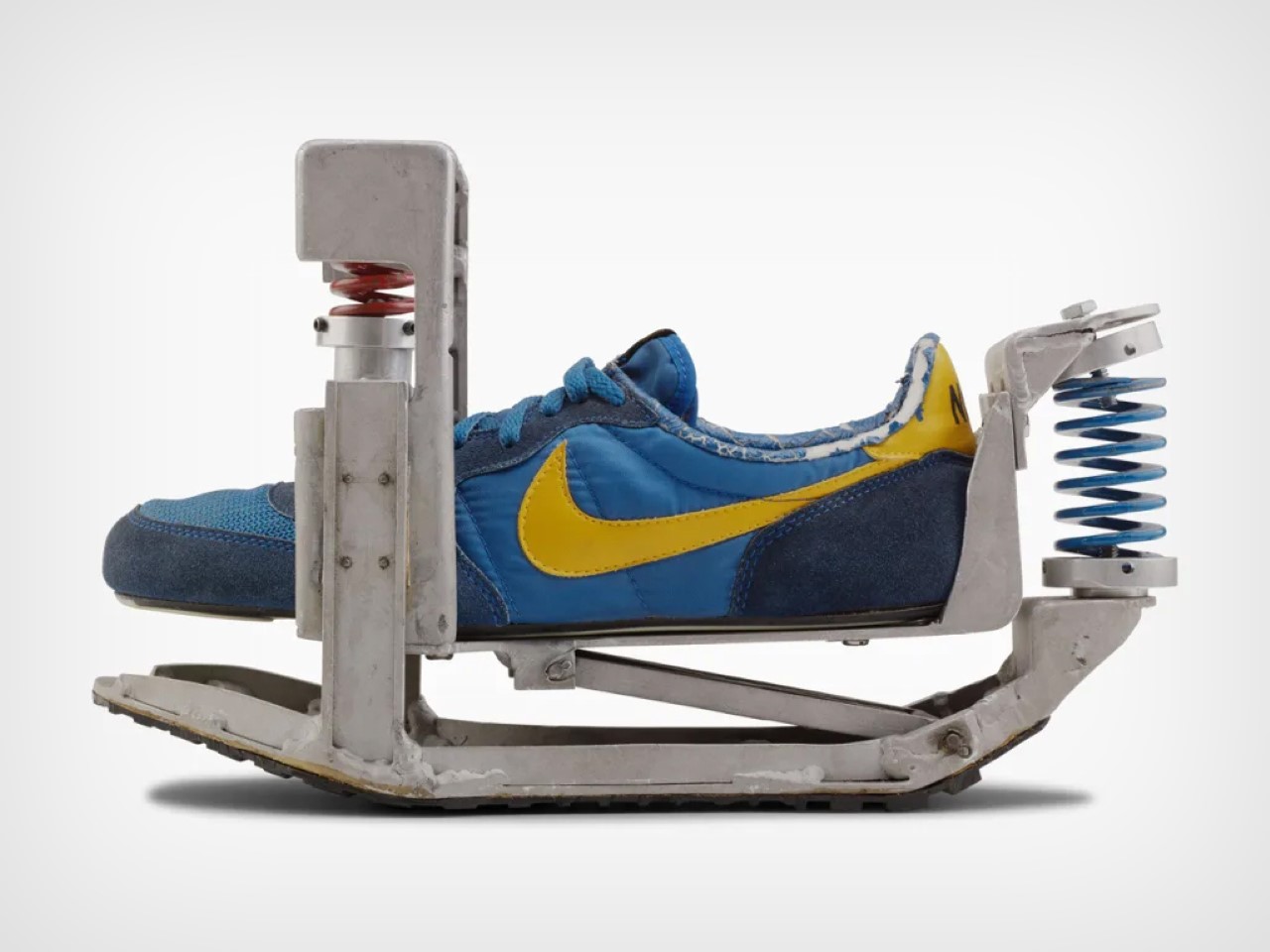
Early Mechanical Shox Prototype (1981) from the Department of Nike Archives
Nestled in an unassuming building, Nike’s top-secret design archive, known as the Department of Nike Archives (DNA), houses a treasure trove of over 200,000 rare artifacts. From never-before-seen sneaker prototypes to the original Nike “swoosh” sketch, the DNA is a sneaker lover’s paradise. Recently, the DNA opened its doors to curators for the first time, leading to the creation of the groundbreaking exhibition, “Nike: Form Follows Motion.” For the first time, Nike has opened its doors to a select group of curators who have scoured these holdings to create an exhibition at the Vitra Design Museum in Germany. The exhibition offers a rare glimpse into the brand’s history and design philosophy.
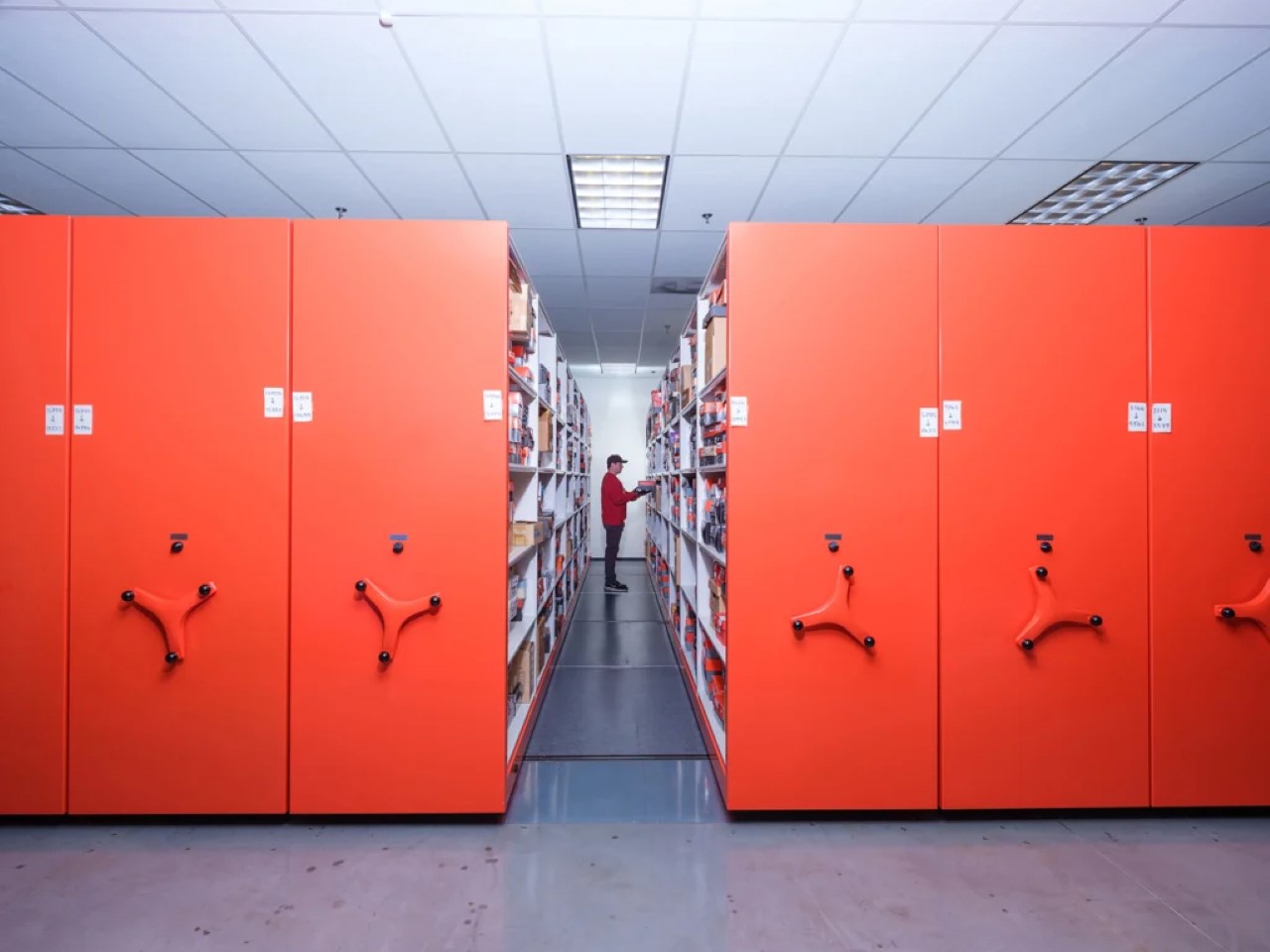
Set to run from September 21, 2024, to May 2025, the exhibition is the first of its kind dedicated solely to Nike. It traces the company’s journey from its founding in 1964 to its current position as the largest apparel company in the world. Curated by Glenn Adamson, who also co-edited a book to accompany the exhibition, the show seeks to explore Nike’s unique approach to design. According to Adamson, Nike’s design thinking is intensely creative and complex, rivaling that of any other company in the industry. The exhibition is structured into four chronological sections, each representing a significant phase in Nike’s evolution.
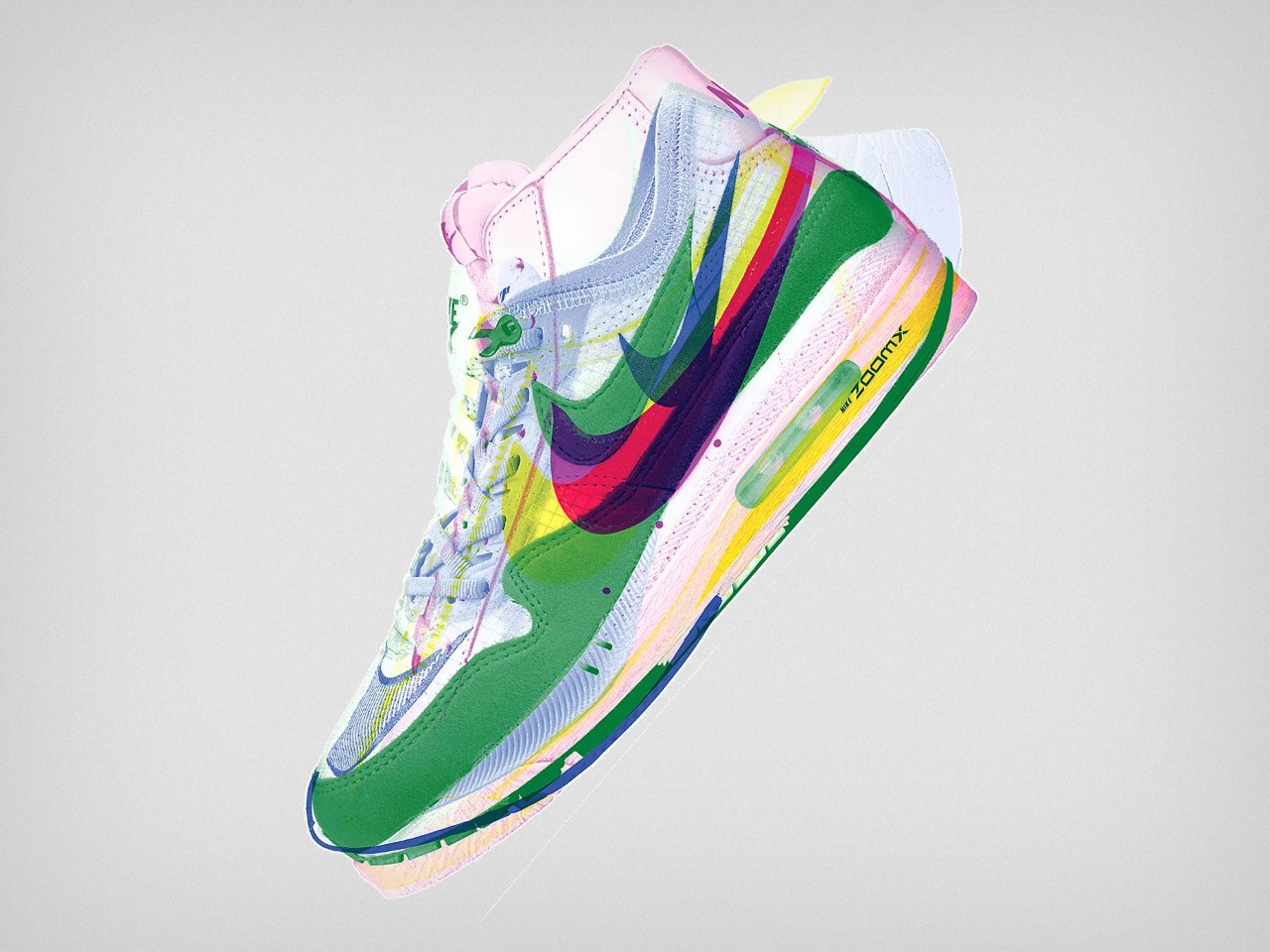
“Nike: Form Follows Motion” is divided into four chronological sections: “Track,” “Air,” “Sensation,” and “Relation.” The first section, “Track,” offers a look at Nike’s early years when jogging was a niche activity. This period is marked by the brand’s first product innovations, including the release of the waffle-soled trainer in the early 1970s. The next section, “Air,” covers Nike’s expansion into sports advertising, bolstered by high-profile partnerships with athletes like Michael Jordan. The “Sensation” section focuses on Nike’s extensive sports research programs, highlighting the brand’s commitment to pushing the boundaries of performance wear. Finally, the “Relation” section reflects on Nike’s history of collaborations with external designers, showcasing the brand’s willingness to embrace new ideas and technologies.
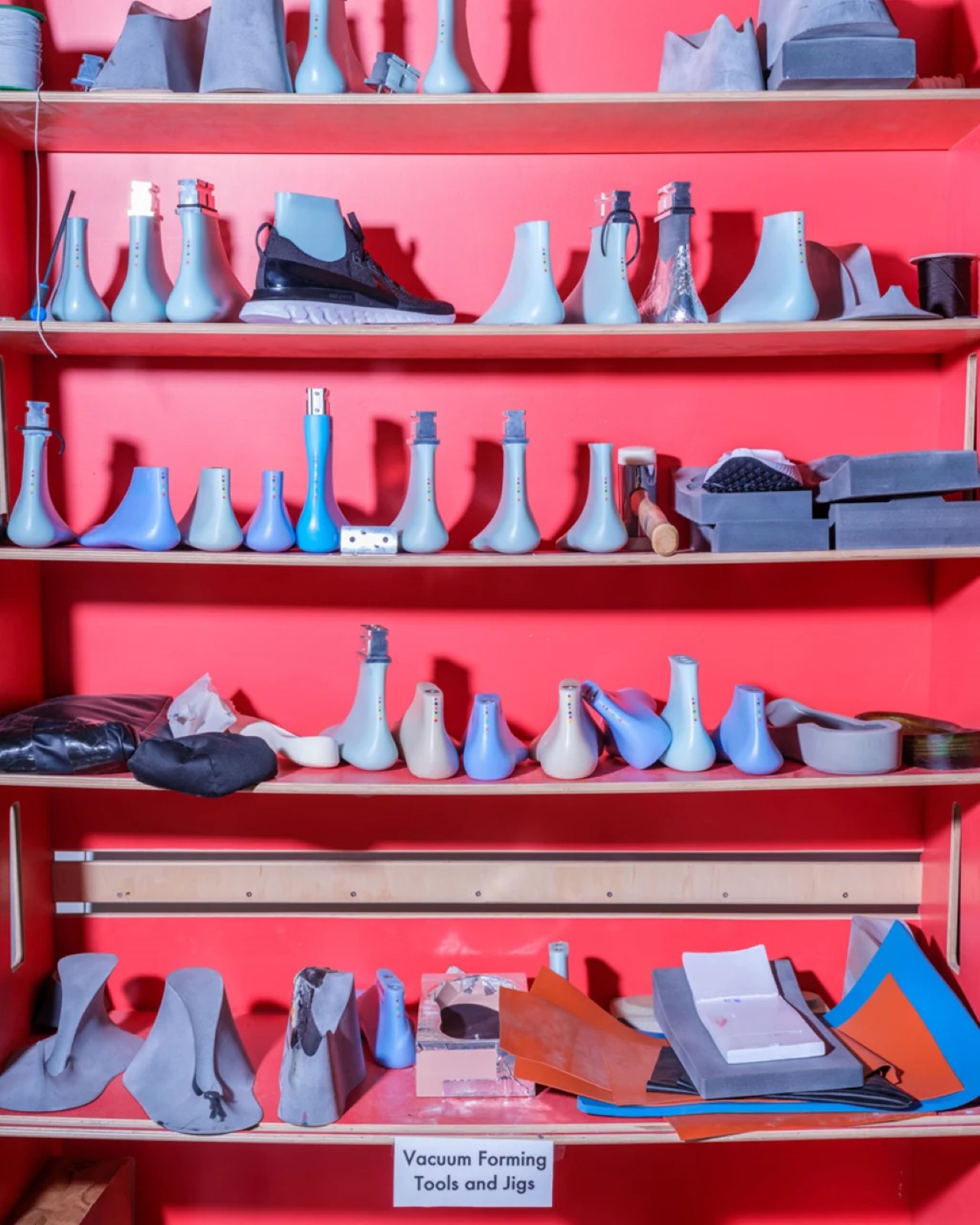
To create this exhibition, Adamson made several trips to the DNA, where he had access to materials that had never been publicly displayed. The archive itself is unremarkable from the outside, but inside, it’s a veritable wonderland for sneaker enthusiasts. The space is filled with moving shelves, each stacked with shoeboxes containing some of Nike’s most significant designs. Among the highlights are prototypes of the Air Force One that never made it to market and the original stock of the Air Max shoe, known for its revolutionary see-through soles designed by aeronautical engineer Frank Rudy.
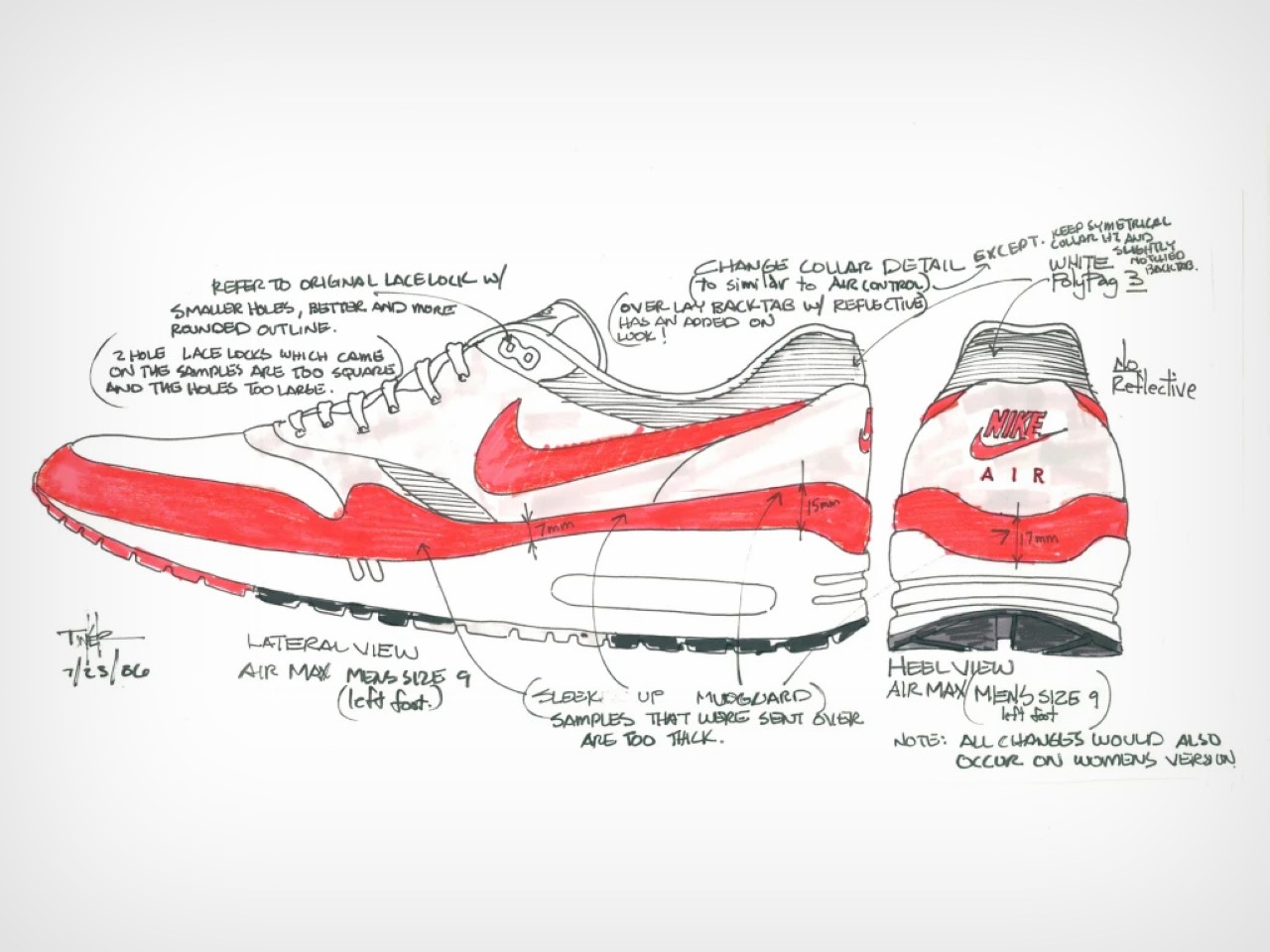
Sketch of Air Max, Tinker Hatfield (1986)
The exhibition also features deadstock shoes and prototypes that have remained hidden in the DNA until now. These include early mechanical prototypes of the Shox line, which featured external shock mounts designed to improve athletic performance. Adamson describes one such prototype as a “Frankenstein object,” a bizarre yet fascinating piece of Nike’s design history that had to be included in the exhibition (image at the beginning).
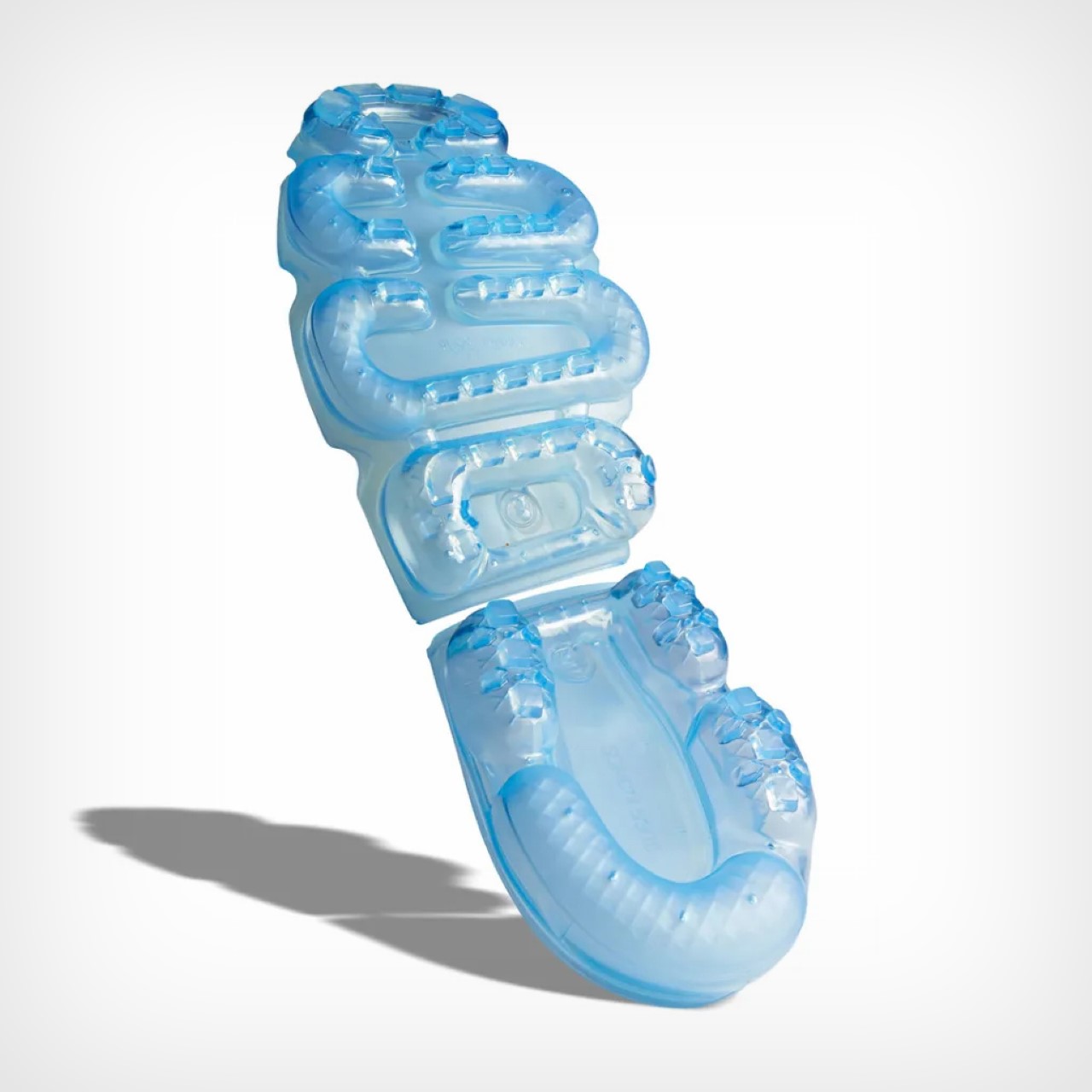
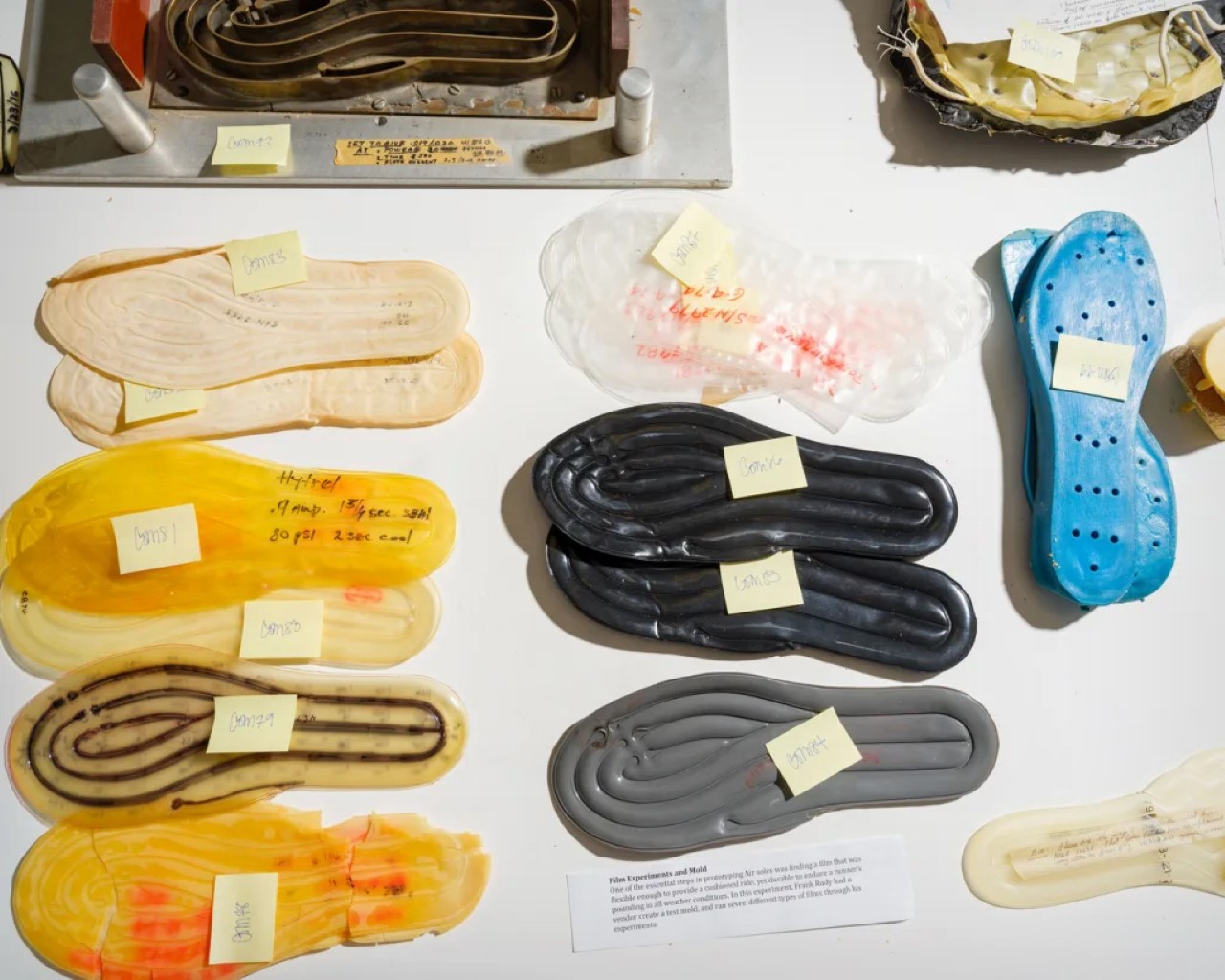
In addition to these historical artifacts, the exhibition also offers a keen insight into Nike’s current design practices. One of the most impressive innovation centers is the Nike Sport Research Lab (NSRL) in Beaverton, Oregon. The 85,000-square-foot facility is equipped with cutting-edge technology, including hundreds of cameras and dozens of force plates that track athletes’ movements. The insights gathered from this research are used to develop new products like the Vapormax running shoe, which is one of Nike’s most studied shoes to date.

Nike: Form Follows Motion comes at a crucial time for the company. In recent years, Nike has faced challenges, including supply chain issues and increased competition from other running shoe brands like Hoka and Brooks. Despite these obstacles, Nike remains committed to innovation. The company recently launched an AI platform called Blackbox to aid in the design of new products. According to CEO John Donahoe, Nike is poised to make a comeback with bold, new releases that will once again set the standard in the industry.
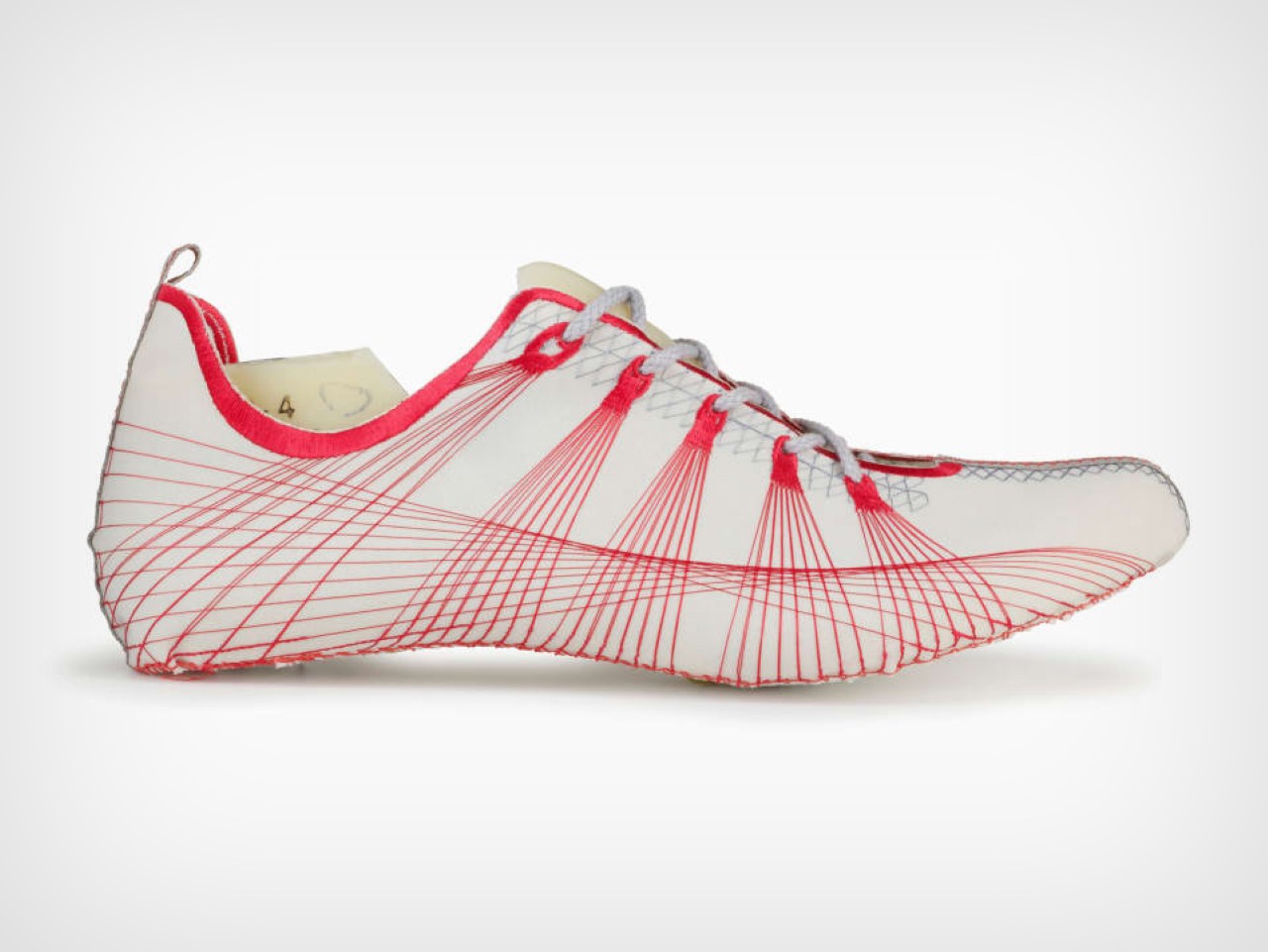
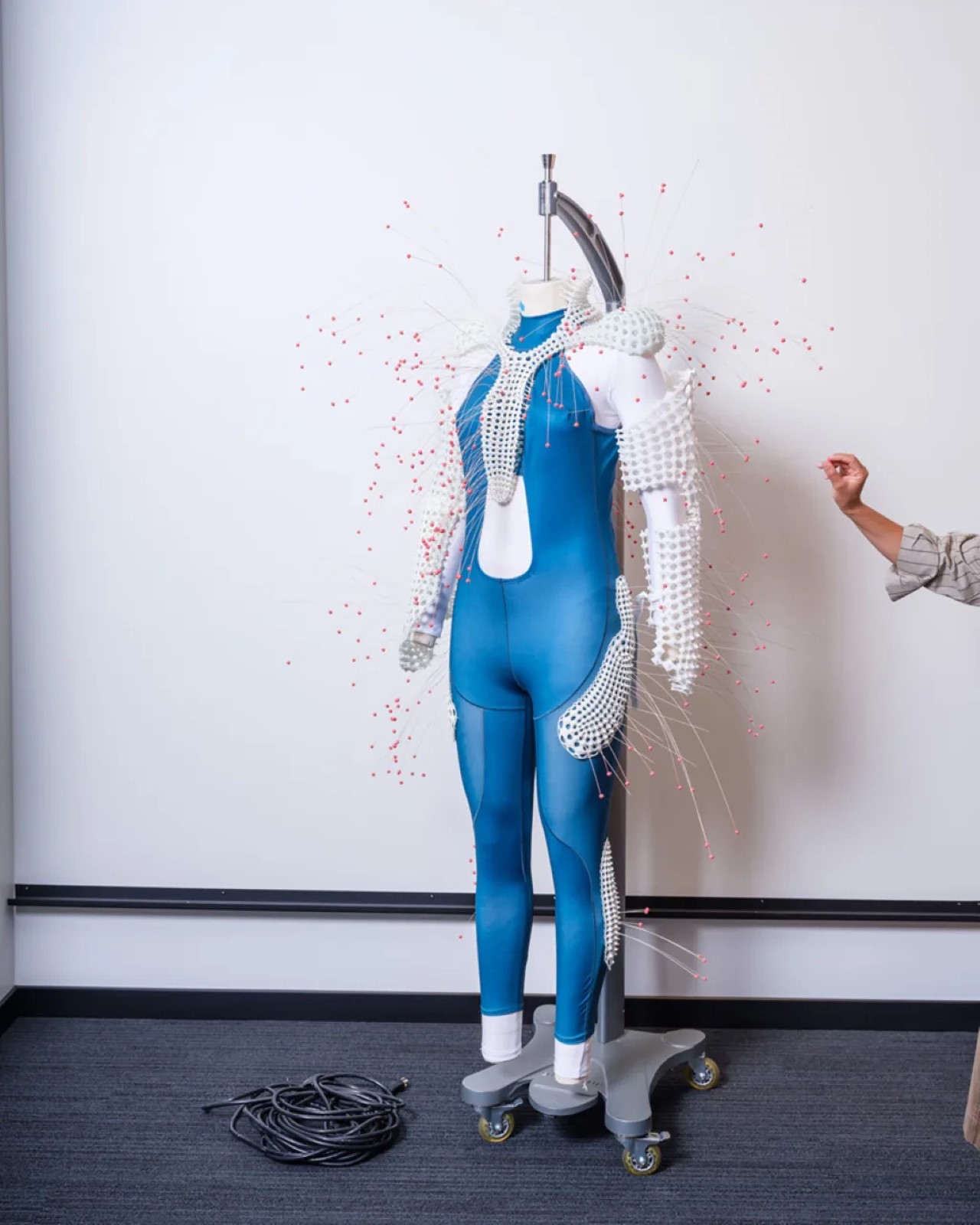
via Fast Company
The post Nike’s Secret Design Archive to be made visible to the public for the first time at the Vitra Design Museum first appeared on Yanko Design.